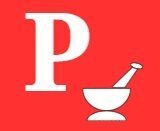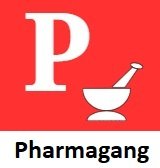We are giving ESIC pharmacist Homeopathy syllabus and pattern in this post. There are lot of confusions about the syllabus of ESIC pharmacist, this post will solve them. Employees State Insurance Corporation recruit lots of pharmacist regularly in all states of India.
First we will provide the pattern and then after it the ESIC Homeopathy pharmacist exam syllabus.
Pattern Of ESIC Pharmacist ( Homeopathy) Exam
Written Examination Maximum marks: (125 Marks)
Mode Of Exam: Online
Number Of Questions: 125
Type Of Exam: Multiple choice objective type paper
Duration Of Exam: 02 Hours
Subjects:
I. 100 Questions (100 marks) will be based on Technical professional/ Subject/Post &
II. 25 (25 Marks) Questions on Aptitude / General Awareness / General intelligence / Arithmetic Ability.
Important Information Regarding ESIC Homeopathic Pharmacist Exam Pattern:
- The questions will be set Bilingual (i.e.English and Hindi language
- The maximum marks will be 125.
- The level of difficulty will be as per the educational qualification of the post. The questions on Arithmetic Ability will be of 10th Standard Level.
- There will be negative marking at the rate of 0.25 marks to be deducted for every wrong answer to eliminate the element of chance.
Syllabus of ESIC Pharmacist – Homeopathy Pharmacy Section
ESIC pharmacist exam syllabus can be divided into two sections:
Section 1: This section will consist 100 questions from homepathy pharmacy subjects
Section 2: This section will consist of 25 questions from Aptitude / General Awareness / General intelligence / Arithmetic Ability
Detailed Syllabus For Homeopathy Pharmacist
ANATOMY & PHYSIOLOGY
ANATOMY
1. Introduction To Anatomy & Histology, Structure Of Cell, Epithelial Tissue, Muscular Tissue, Nervous Tissue.
2. Skeletal System, Structure Of Bones, Types Of Bones, Bones Of Cranium,Face Vertebral Column Upper And Lower Limbs, Fracture Of Bones, Various Movements Of Joints.
3. Muscular System, Structure And Types Of Muscles In Human Body, Important Muscles And Their Group Action.
4. Circulation System, Structure Of Heart, Names And Position Of Main Blood Vessels.
5. Lymphatic System, Lymph Vessels,Lymph Nodes And Lymphoid Organs, Their Structure &Functions.
6. Digestive Systems. Parts Of Gastrointestinal Tract And Associated Glands.
7. Respiratory System. Parts Of Respiratory System.
8. Urinary System. Parts Of Urinary System.
9. Endocrine System. Various Endocrine Glands. Thyroid. Parathyroid. Adrenal Glands Pituitary Pancreas. Thymus And Sex Glands.
10. Reproductive System. Male & Female Reproductive Organs.
11. Skin And Sense Organs. Eye, Ear, Nose. Taste Buds.
12. Nervous System. Parts Of Brain, Spinal Cord, Peripheral Nerves.
PHYSIOLOGY
1. Blood. Composition And Function Of Blood, Haemopesis, Blood Coagulation, Blood Groups, Body Fluid.
2. Cardiovascular Systems. Circulation Of Blood, Function Of Heart And Blood Vessels. Control Of Heart Rate, Pulse, Regulation Of Blood Pressure, Blood Volume.
3. Respiratory System. Function Of Lungs, Mechanism Of Breathing And Exchange Of Gases InThe Lungs, Regulation Of Respiration, Respiration Disorder Like Anoxia. Dyspnea Cyanosis etc. Artificial Respiration Lung Function Tests.
4. Digestive Systems. Digestion Of Food In Mouth, Stomach & Small Intestines. Absorption Of Food, Function Of Liver Function Tests.
5. Excretory Systems. Structure & Function Of Kidney And Urinary Bladder. Mechanism Of Urine Formation. Disorders Of Kidney.
6. Endocrine Systems. Physiology & Female Reproductive Organs.
7. Nervous System. Neurone & Its Functions, Function Of Central Nervous System. Autonomies Nervous System, Physiology Of Vision, Hearing & Olfaction.
INTRODUCTION TO HOMOEOPATHY
1. Life history of the founder Dr. SAMUEL HAHNEMANN
2. Homoeopathy- true science of healing
3. Cardinal principles-seven principles
4. Vital force-in healthy condition-diseased condition
5. Vital force-functions
6. Basic of Homoeopathic Pharmacy-Sinulia Simibus-Carenter
7. Totality of Stmptmis.
SUBJECT – HEALTH EDUCATION
1. Definition Function Health According To World Health Organization.
2. Dimensions Of Health
3. Determinants Of Health
4. Ecology Og Health
5. Health & Development
6. Indications of Health
7. Responsibility of Health
8. Primary Health Care
9. National Health Policy
SOURCE TYPE & PREPARATION OF H.P. MEDICINE
SOURCES OF HOMOEOPATHIC DRUGS:-
1. Plant Kingdom
2. Animal kingdom
3. Minerals
4. Nosodes
5. Sarcodes
a. Process of collection of drug substances
b. Preservation of drugs & potencies
c. Standardization of drugs
d. Vehicles- solids, liquids, semisolid vehicles.
METHODS OF PREPARATION OF HOMOEOPATHIC DRUGS:-
1. By preparing mother tinctures
2. By preparing mother solutions
3. By triturating the medicinal substances
a. Old & new methods of preparing medicines
b. Different scales of preparation
c. Potentisation
d. Drug-medicine-remedy.
HAEMATOLOGY & BIO-CHEMISTRY
1. Introduction To Haematology: (A) Definition, (B) Importance, (C) Important Equipment Used.
2. Laboratory Organization And Maintenance
3. Introduction To Blood, Its Composition, Function And Normal Cellular Components.
4. Basic Formation Of Blood: (A) Erythropoiesis, (B) Leucopoiesis, (C) Thrombopoiesis.
5. Collection And Preservation Blood Sample For Various Haematological Estimation.
6. Haemoglobin: Definition And Types, Normal Values, Synthesis And Breakdown, Haemoglobin Estimation Techniques, Principles & Procedures For Hb Estimation, Errors Involved And Means To Minimize Errors For Hb Estimation.
7. Total Leucocytes Count (Tlc): Normal Values, Clinical Significance, Method Of Estimation, Source Of Errors.
8. Differential Leucocytes Count(Dlc): Normal Values, Clinical Significance, Sources Of Errors And Means To Minimize Them
9. Erythrocyte Sedimentation Rate(Esr): Normal Values, Definition, Principle And Procedure To Determine Esr, Factors Influencing Esr And Clinical Significance, Errors Included And Their Minimization.
10. Packed Cell Volume/Haematocrit Value: Normal Values, Estimation By Macro And Micro Method, Merits And Demerits Of Estimation Method, Factors Influencing Pcv, Clinical Significance.
11. Red Cell Indices(Rci): Definition,Procedure And General Formula For Calculating Indices,
Clinical Significance, Normal Value, Numerical Problems Related To Rci.
12. Absolute Eosinophil Count: Principle And Procedure For Counting Aec, Clinical Signifcance, Normal Value, Risk Of Error Involved If Any.
13. Reticulocyte Count: Principle And Procedure, Clinical Significance, Normal Value, Risk Of Error Involved If any.
14. Platelets Count: Normal Values, Procedure And Estimation, Clinical Significance, Errors And Re-Correction.
15. Preparation Of Blood Films: Types, Methods Of Preparation.
16. Routine Staining Techniques In Haematology: Giemsa Stan, Leishman Stain, Principle, Composition, Preparation Of Staining Reagents And Procedure.
17. Determiantion Of Serum Lactate Dehydrogenase
18. Hazards & Safety Measures In Clinical Bio-Chemistry Laboratory
19. Quality Control And Quality Assurance In A Clinical Bio-Chemistry Laboratory
20. Laboratory Organization, Management And Maintenance Of Records
21. Normal Range In Blood, Serum, Plasma And Urine And Reference Values.
22. Principles Of Assay Procedures For:- (I) Glucose, (Ii) Proteins,(Iii) Urea, (Iv) Uric Acid, (V) Creatinine, (Vi) Bilirubin, (Vii) Lipids
23. Principles, Procedures For Estimation & Assessment Of The Following Including Error Involved And Their Corrections:- (I) Sodium, Potassium And Chloride, Iodine (Ii) Calcium,Phosphorous And Phosohates.
24. Instruments For Detection Of Radioactivity
25. Uses Of Radioisotopes In Clinical Bio-Chemistry
26. Radioisotope Techniques.
DISPENSING & ADMINISTRATION OF H.P. MEDICINES
A. OPOSOLOGY & HOMOEOPATHIC POSOLOGY:-
1. Principles of prescription
2. Principles of medication
3. Principles of dispensing
4. Principles of drug administration
5. Principles of external application
6. Principles of drug proving
B. DOSES, VARIOUS KINDS OF DOSES, REPITITION OF DOSES:-
HOMOEOPATHIC PHARMACEUTICAL
HOMOEOPATHIC PHARMACEUTICS:-
1. General idea about laboratory and laboratory methods.
2. Brief understanding of homoeopathic pharmaceuticals instruments and applications.
3. Brief understanding about the preparation of tablets globules, prouder, ointments etc.
4. Principles of labeling of homoeopathic drug.
5. Safety measures in homoeopathic pharmaceuticals.
LEGAL ASPECT OF H.P. DRUG MANUFACTURING
GENERAL IDEA ABOUT FOLLOWING ACTS:-
1. Drugs and cosmetic act:- 1940
2. Drugs and magic remedy act and rules
3. Medical and toilet preparation act:- 1955
4. Dangerous drug act:- 1930
5. Pharmacy act for starting pharmacy and pharmacy industry.
LEGISLATION, IMPORT, MANUFACTURE, SALE & DISTRIBUTION
1. Part-VII-A manufacture for sale of homoeopathic medicines.
2. Dangerous drugs act, 1930
3. The medicinal & toilet preparation(excise duty)act 1955
4. The drugs & magic remedies act 1954 & the rules,1955
5. Drugs (price control) order 1970 & the relevant amendment.
6. Duties of homoeopathic practitioners to their patients.
7. Central register of homoeopathy.
INTRODUCTION OF METERIA MEDICA
Introductory lectures: Teaching of the Homoeopathic Materia Medica should include:-
1. Nature and scope of Homoeopathic Materia Medica.
2. Sources of Homoeopathic Materia Medica.
3. Different ways of studying the Materia Medica.
The drugs are to be taught under the following heads:-
1. Common name, natural, order, habitat, part used, ,preparation.
2. Sources of drug proving.
3. Symptomatology of the drug emphasizing the characteristic symptoms and modalities.
4. Comparative study of drugs.
5. Complimentary, inimical, antidotal and concomitant remedies.
6. Therapeutic applications (applied Materia Medica).
A study of 12 tissue remedies according to Schusler’s biochemic system of medicine.
Syllabus of ESIC Pharmacist Exam – Aptitude and Awareness Section
1.General Awareness
• Current affairs-India
• Indian History
• Indian Geography
• Indian Economy
• Indian Constitution
• General Science
• Current World events
• Sports
• Indian Music, Dance &Culture
2.Intelligence and Aptitude
• Coding and decoding-Small & Capital letters/numbers coding, decoding and classification
• Analogies-Semantic Analogy, Symbolic/Number Analogy, Figural Analogy
• Similarities and differences
• word building
• Arithmetic number series, non-verbal series
• Visual memory, discrimination, observation, relationship concepts
• Space visualization
3. Arithmetic Ability
• Percentage & Averages
• Ratio & Proportion
• Interest, Profit & Loss, Discount
• Time &distance
• Time & work
Please note: ESIC DO NOT PROVIDE OFFICAL SYLLABUS. We provided homeopathy pharmacy syllabus by professional knowledge and experience of team pharmagang. Preparation will get direction and candidates will attempt most questions if complete this syllabus.
Good Luck for your exam


Visit vineheath center. com, i used their COPD treatment for my emphysema, i am emphysema free